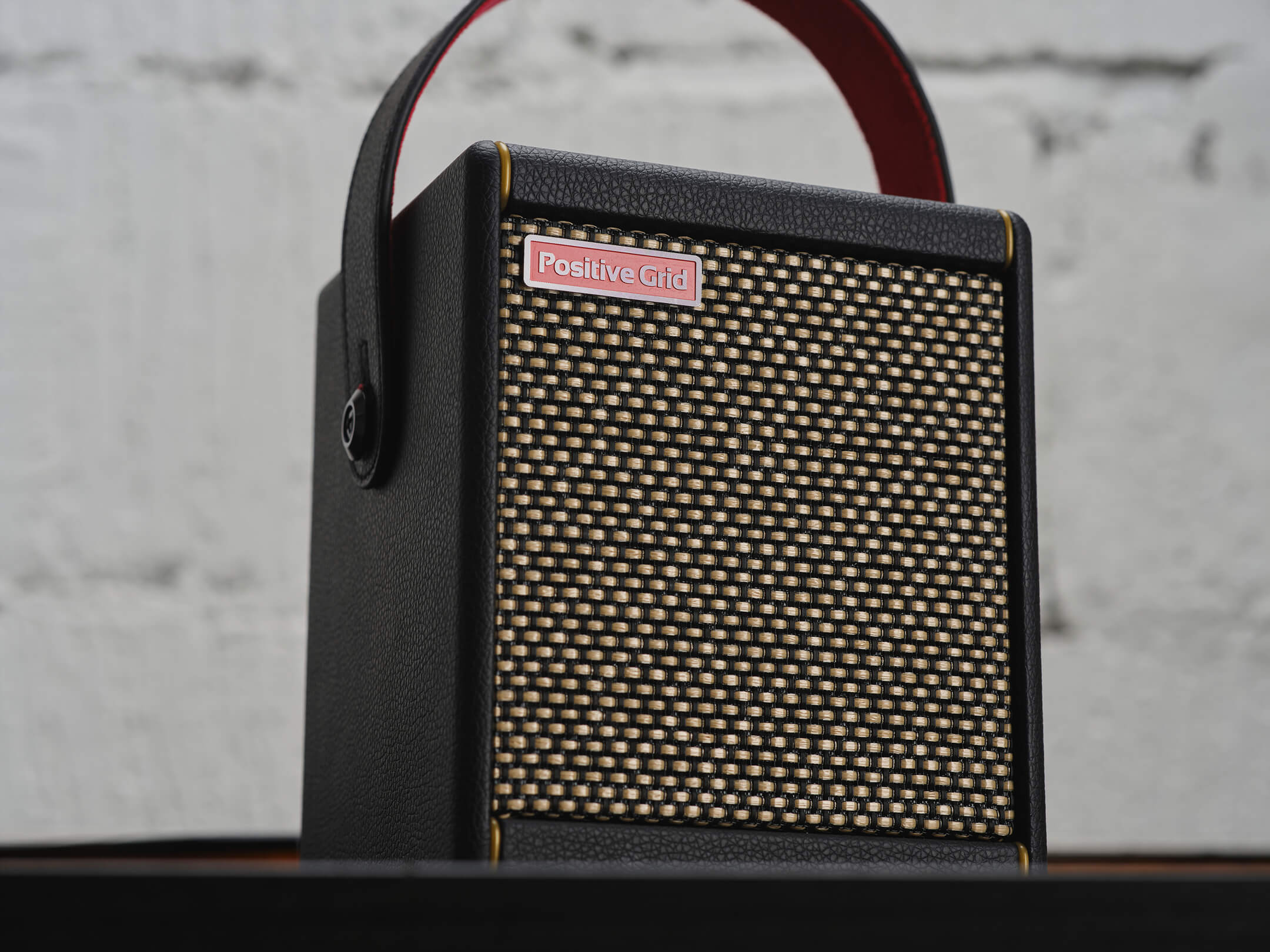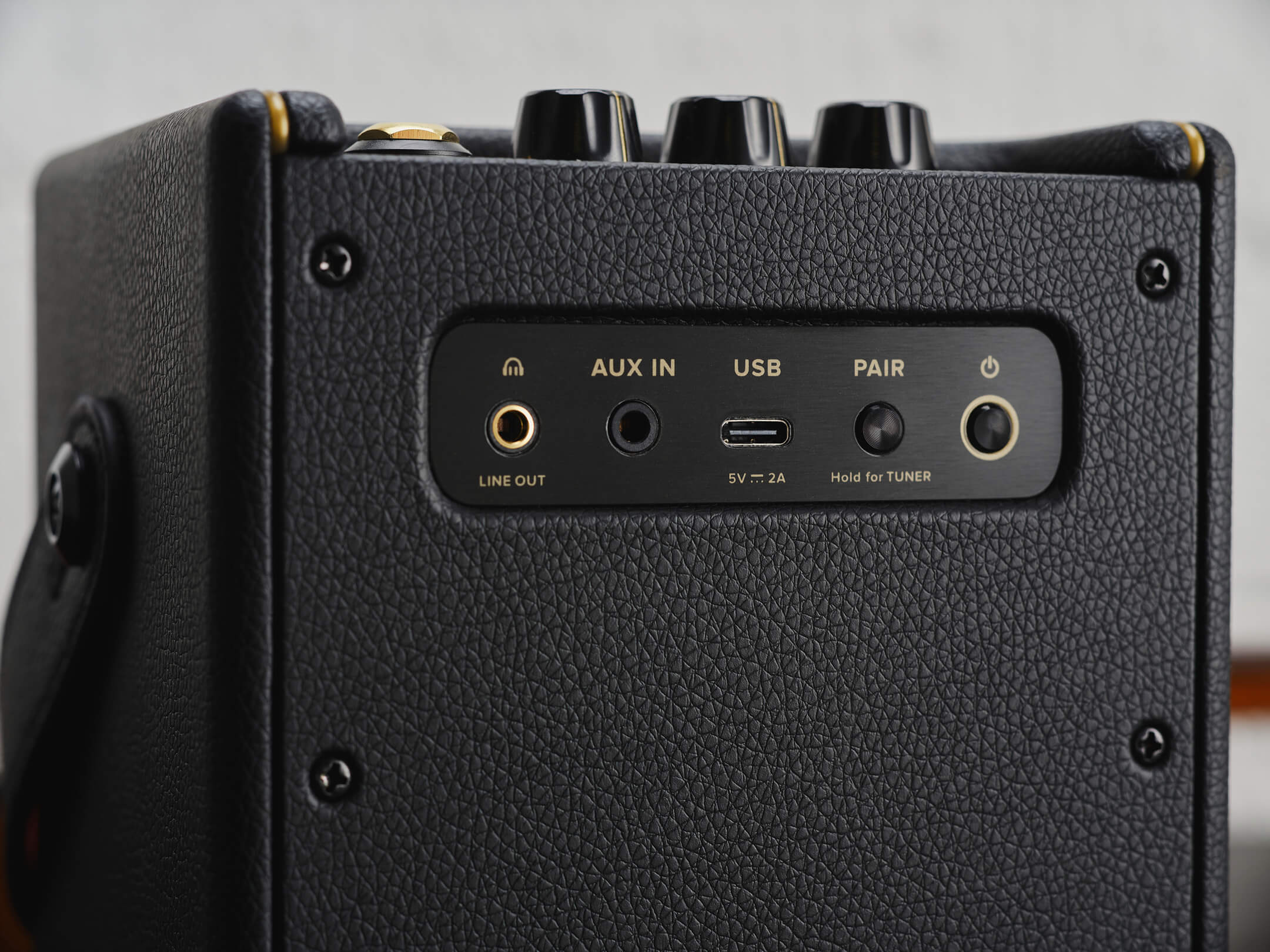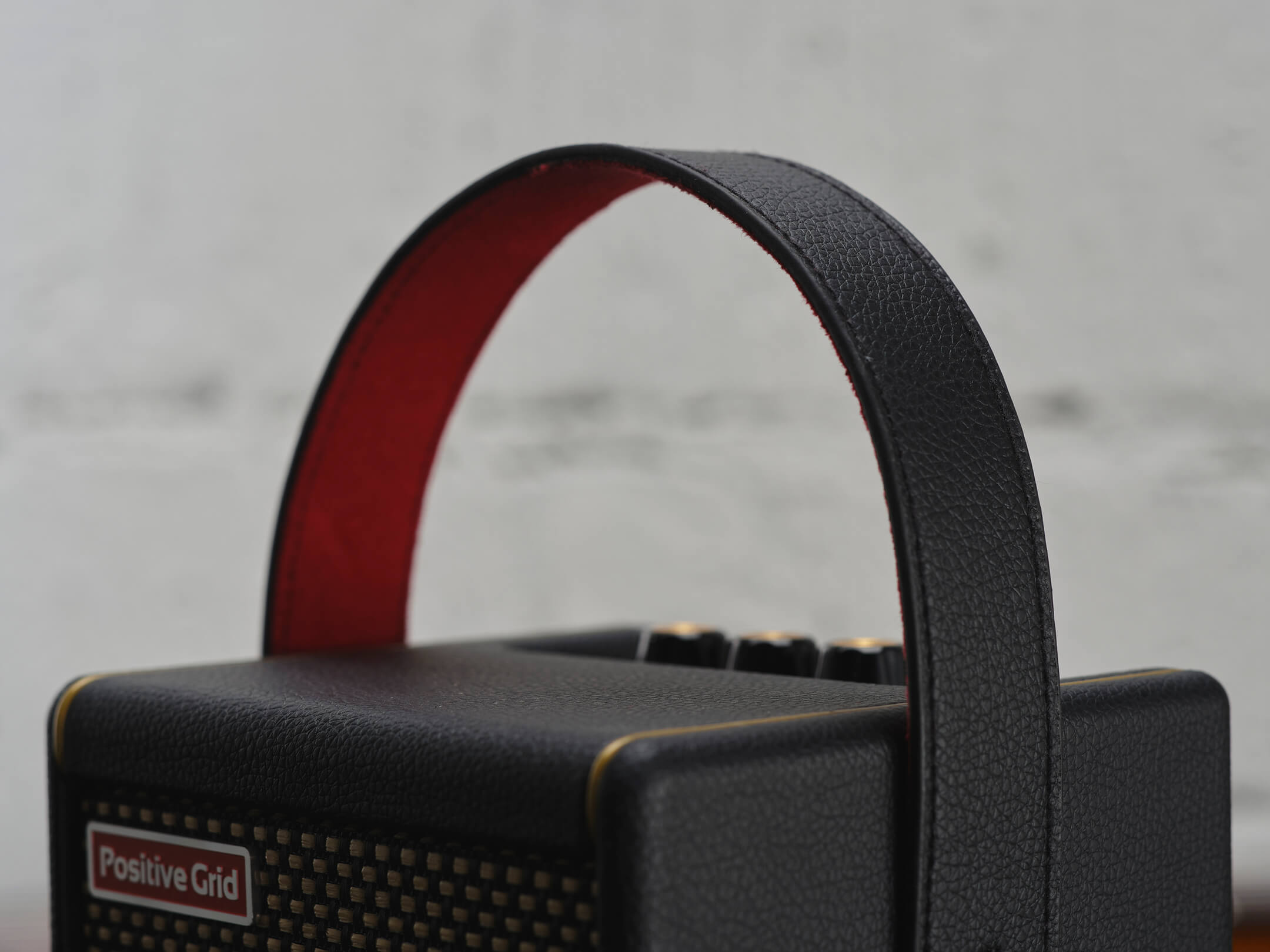The Big Review: Positive Grid Spark Mini – Is this the greatest practice amp ever?
Positive Grid’s Spark Mini promises the same quality and features with a better portability. Can the Spark Mini live up to its expectations?

Image: Adam Gasson
Review Overview
Our rating
9
Our verdict
If you’ve had any sort of interaction with guitar social media over the last two years, you’ll probably have heard of the Spark. Launched at the tail end of 2019, this desktop unit was the first hardware combo guitar amp from software amp specialists Positive Grid, and with its clever companion app and tones borrowed from PG’s well-regarded BIAS software, it promised to be the ultimate practice amp.
With any new product, timing is everything. So when the pandemic hit and all of a sudden everyone became a bedroom player overnight, the Spark became something of an online phenomenon, with seemingly every influencer and guitar star on Instagram lining up to extol the revolutionary virtues a box that seemingly did everything you’d ever need a home guitar amp to do in one compact package and sounded outrageously good while doing it.
Fast-forward to 2022 then, and Positive Grid has launched the Spark Mini – a scaled down version of the 40-watt Spark that promises to pack in everything that people loved about the original into a smaller and genuinely portable package. So, have the boffins at PG made another hit, and does the Spark platform as a whole live up to the seemingly unending hype? Well, let’s find out…

What are the differences between the Spark Mini and the Spark?
First up, some vital statistics for you. The Spark Mini is roughly one third the length and a smidge shorter and deeper than its 40-watt sibling, making it roughly the size of a small studio monitor or a smart speaker like the Sonos One or Echo Studio. Physics dictates that some changes from its larger sibling are inevitable, and so instead of a pair of four-inch full-range speakers and 40 watts of power, here we get 10 watts of Class D power pumping through two two-inch drivers and a passive radiator on the bottom (a very important addition, more on that later).
The differences don’t end there; we mentioned portability being a key aspect of the Spark Mini’s proposition, and so rejoice in being freed from the tyranny of plug socket thanks to a 3,000mA rechargeable battery that promises up to eight hours playtime at low to moderate volumes. Obviously this opens up a wealth of al-fresco playing possibilities, and you’re helped on your way thanks to the addition of a reversible faux suede/faux leather carry handle to make the Mini a literal grab and go affair.
Being a third smaller than the 40-watt Spark does come with some unavoidable compromises on the control front, however. There’s simply no room on the condensed control panel to fit the 17 knobs, buttons and switches that adorned the original, but even so the Mini’s three knobs feel a touch ascetic.
There’s no tone stack or gain control here, simply controls for guitar volume, music volume and a rotary switch to select one of the four signal chain presets that can be stored on the hardware at any one time. Round the back you’ll also find 3.5mm jacks for headphones and an aux-in, while a USB-C port does double duty as both the charging port and the means to use the Mini as a recording interface (as well as a means of updating the firmware). Holding down the Bluetooth pairing button also activates a tuner.
The Spark Mini uses the same iOS/Android app as its 40-watt sibling, but clearly with less control on the unit itself, that app experience is going to be all-important – let’s dive in.

Positive Grid Spark Mini: Hands on
In the last decade, we’ve all become accustomed to a certain level of polish when it comes to our gadgets that belies how hard it is to make the sort of seamless and intuitive user experience a reality – something that’s tripped up many an MI brand trying to make the leap into consumer electronics in the last few years.
While opening the Spark Mini might not have the theatre of unboxing a new iPhone, there’s something reassuring about the way the amp feels in your hands, the clean lines, the expertly applied black tolex and gold piping (it’s also available in Pearl white), even the way the knobs twist… it feels like a quality product.
This positive impression continues to the setup, which is a breeze. Simply download the Spark app to your phone or tablet, turn the amp on, hit the pairing button, and within seconds you’ll be on your way. You’ll need to pair it a second time to stream audio from your device, but that’s all handily explained within the app and once you’ve done it you’ll never need to faff with it again.
Positive Grid Spark Mini: Sounds
For those of us who grew up on tiny practice amps that sounded like the proverbial wasp in a jam jar, it’s easy to look at the Mini and wonder how something this small can sound good. Well, friend, put those preconceptions aside and prepare to have your mind blown. The Spark Mini doesn’t just sound good for a small practice amp, it doesn’t just sound good for a modelling amp – it’s just a great sounding amp. Full stop. No qualifications.
Key to this of course, are the onboard amp and effects tones, and there’s no doubt that the BIAS pedigree of these sounds is a huge boon. There are over 30 different amp types available, running the gamut from Golden Era archetypes, to modern boutique gems and high gain fare, all of which sound top notch – but there’s more to it than just software. This thing sounds big in a way that no small amp has any right to do, certainly not one with just a pair of two-inch drivers behind that basketweave grille cloth.
Ah, but of course – there’s not just a pair of two-inch drivers. Remember our friend the passive radiator? This, nestled between four ‘custom damping’ rubber feet on the base of the amp, might be the secret to the Mini’s magic. Also known as a ‘drone cone’, the passive radiator uses the enclosure’s internal SPL to create improved low-end frequencies that normally wouldn’t be possible for such small speakers.
Put the Mini on a hard surface and the results speak for themselves – there’s a roundness and punchiness to the bass response that sounds, and most importantly feels, like a real full-size amp – even with high gain sounds that can so easily feel boxy with small speakers. It’s also strikingly loud. It might not have the headroom of the 40-watt version, but there’s still plenty to use here, and enough volume that could certainly annoy the neighbours, if not quite wake them up. Crucially, it also sounds just as good at polite and even whisper-quiet volumes.

Using the Spark app with the Spark Mini
Of course, with such a spartan control layout, all of the above will be rather moot if the accompanying app is a pain, but thankfully nothing could be further from the truth. Not only does the Spark App make editing your presets a doddle (though the virtual knob-twisting is a little fiddly on a phone), it’s just one small part of what this remarkable practice tool can do.
Hit the app’s Music tab and you’ll see a wealth of options to make practice genuinely fun. Most immediately, you’ll probably want to load up a YouTube video or song from your Spotify/Apple music library and play along, complete with AI-generated chord charts to help you learn the basics. We found the chord suggestions for some songs a little hit and miss, but the suggested user presets usually offer a quick route to getting very close to the sound you’re after.
Perhaps most impressive of all however is the Smart Jam feature, which listens to you playing for eight bars and then uses AI to generate a backing track for you to continue to jam over, picked from four genres – rock, pop, funk and blues. You’ll never need to comb YouTube for a suitable backing track again.

Should I buy the Positive Grid Spark Mini?
Like most consumer tech products, the Spark Mini ships with a few gremlins that might hamper your enjoyment out of the gate. You’ll want to update the firmware immediately as the headphone volume on the shipped version is far too polite, but thankfully has recently been fixed. What is still an issue however is a latency issue with the USB recording out – Positive Grid has promised to address this soon but at time of writing it remains a problem for anyone wanting to direct record their amp into their DAW.
Another thing that technophobes will have to make their peace with is that you’re going to have to spend some time getting your tones set up to your taste in the app. Investing the time in it at the start might seem a little like homework, but as stated, the app itself is a breeze to use and once you’ve found your four core sounds for the four onboard presets you’ll never have to delve into it again if you don’t want to.
You’ll also need to come to terms with the spartan on-amp control layout, and particularly the lack of a hardware gain control – arguably the biggest oversight on the amp itself. Plenty of users will ride the volume control or get their dirt from pedals of course, but if you like to tweak your amp drive on the fly, you’ll be scratching your head as to why PG decided to devote one of those three precious knobs to controlling the music volume.
It feels like such a waste, and being able to quickly and easily tweak your amp drive for each song would be so much more useful. The original Spark has its music volume on a mini-knob, and while we understand that the Mini is also designed to be a bluetooth speaker (a job it does very well) most people are probably using this as an amp first and foremost, so for us it seems like an uncharacteristically unintuitive design choice.
But these complaints are minor in the grand scheme of things, and don’t detract from the brilliance of the whole package; the Spark Mini removes so many barriers of entry to practice that every home and tour bus in the land would be a better place with one. The Spark Mini will make you want to play guitar more, and it’ll make you a better player while you’re at it – ultimately, isn’t that what all of us want?
Key Features
- PRICE: $229
- DESCRIPTION: Digital modelling amp with smartphone companion app
- POWER RATING: 10 watts
- CONTROL PANEL: 1x guitar input, Preset switch, Guitar volume, Music volume
- REAR PANEL: 3.5mm headphone out, 3.5mm aux input, USB-C charging/recording out, power switch, Bluetooth pairing switch
- SPEAKERS: 2×2” active stereo speakers with passive radiator
- DIMENSIONS: 135mm [w] x 162mm [h] 125mm [d]
- WEIGHT: 1.361kg
- CONTACT: Positive Grid




